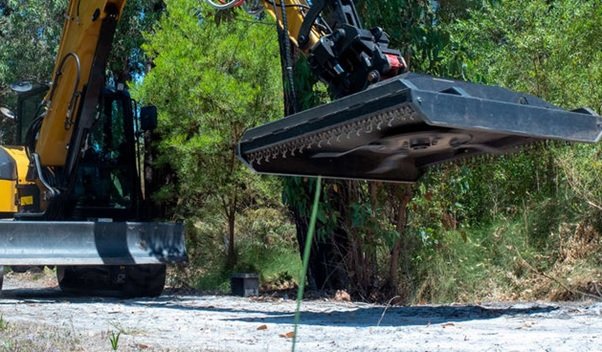
Construction sites are bustling hubs of activity where every second counts. To meet tight deadlines and ensure the job is done right, construction professionals rely on a variety of heavy equipment, including diggers. These versatile machines are the workhorses of construction, capable of digging, lifting, and moving large quantities of earth and materials. But what makes them even more efficient are the attachments they use. In this guide, we’ll explore how digger attachments enhance construction efficiency and transform the industry.
The Role of Digger Attachments
These attachments are specialised tools designed to augment the capabilities of diggers and excavators. They are engineered for specific tasks, allowing construction crews to perform a wide range of functions without the need for multiple machines. Let’s delve into how these attachments are revolutionising construction efficiency:
1. Versatility in Action
These attachments transform a standard digger or excavator into a multifunctional powerhouse. With the right attachment, a single machine can take on various roles, from digging trenches to loading materials, breaking concrete, and even handling heavy lifting. This versatility streamlines construction projects by reducing the need to switch between different machines, saving both time and money.
2. Precision and Productivity
In construction, precision is paramount. Attachments are designed to provide exceptional precision in tasks such as digging trenches, grading, and excavating foundations. This precision ensures that the job is done right the first time and enhances overall productivity by reducing rework and material waste.
3. Efficient Material Handling
Material handling is a significant aspect of construction, and attachments excel in this area. Whether it’s a bucket attachment for moving soil, a grapple for handling debris, or a hydraulic thumb for secure gripping, these attachments make material handling faster and more efficient. This, in turn, accelerates project timelines.
4. Cost-Effective Solutions
Investing in a variety of these attachments can be more cost-effective than purchasing multiple specialised machines. Construction companies can save significantly on equipment costs, storage, and maintenance by using versatile diggers with the appropriate attachments for each task.
Common Types of Digger Attachments
These attachments come in various types, each tailored to specific construction tasks. Here are some commonly used attachments and their applications:
1. Excavator Buckets
Excavator buckets are the workhorses of these attachments. They come in different sizes and shapes, such as digging buckets, grading buckets, and trenching buckets. These attachments are ideal for digging, grading, and moving materials.
2. Hydraulic Breakers
Hydraulic breakers, also known as hammers, are used for breaking concrete and rock. They are invaluable for demolition and construction projects that require the removal of existing structures.
3. Augers
Auger attachments are used for drilling holes in the ground, making them essential for tasks like fence post installation, foundation drilling, and tree planting.
4. Grapples
Grapple attachments are versatile tools for handling various materials, from logs and debris to rocks and pipes. They are commonly used in forestry, landscaping, and demolition.
5. Rippers
Ripper attachments are designed for breaking up compacted soil and rock, making them indispensable for excavation and land preparation.
The Efficiency Impact
The use of digger attachments offers several direct and indirect benefits for construction efficiency:
1. Time Savings
These attachments save valuable time on the job site by eliminating the need to switch between different machines. Tasks that would have taken hours can be completed swiftly, contributing to project timelines and deadlines.
2. Reduced Labour Costs
Efficiency gains from attachments often translate into reduced labour requirements. Construction crews can accomplish more with fewer workers, reducing labour costs and optimising resource allocation.
3. Enhanced Safety
These attachments are designed with safety in mind. They enable operators to perform tasks from a safer distance and minimise exposure to potentially hazardous conditions.
4. Lower Equipment Costs
Investing in a range of these attachments can significantly reduce equipment costs for construction companies. It allows them to diversify their capabilities without purchasing multiple specialised machines.
5. Improved Project Quality
The precision and control offered by these attachments result in higher-quality construction work. This, in turn, reduces the need for costly rework and ensures client satisfaction.
The Bottomline:
Digger attachments have become indispensable tools in the construction industry, enhancing efficiency, reducing costs, and increasing project quality. They enable construction professionals to tackle many tasks with a single machine, saving time and resources. As technology advances, we can expect even more innovative attachments that further streamline construction processes and revolutionise the industry. For construction companies looking to stay competitive and deliver high-quality results, investing in the right attachments is an investment in success.
